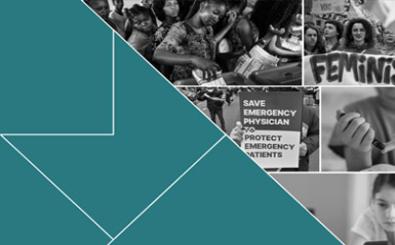What It Means for Companies Here and Abroad
President Donald Trump recently signed an executive order (EO) that has brought new scrutiny to the H-1B visa program – a pipeline used by many tech companies to find skilled workers. The EO directs the US Departments of Labor, Justice, State, and Homeland Security to review ways to prevent fraud and abuse in the H-1B program. Since Trump signed the EO, there has been a great deal of misinformation about what the order does and does not do, as well as the potential implications for tech companies in the United States and India.
What the EO Does and Does Not Do
Nothing in the EO changes or limits the current H-1B visa program. It merely instructs agencies to consider ways to improve the program. Any major changes to the program suggested by the agencies will need to be made by Congress, and regulatory changes would require lengthy rulemaking processes. That said, there is momentum to reform the program, with at least three pieces of legislation already introduced. While it is unclear what a final bill will look like, it will probably contain parts of these three bills
- Senate Judiciary Committee Chairman Chuck Grassley (R-IA) and Sen. Dick Durbin (D-IL) introduced the H-1B and L-1 Visa Reform Act of 2017 in January, which would require employers to recruit American workers before turning to H-1B visa holders and give preference to foreign students pursuing studies in the United States. Given Grassley’s position on the Judiciary Committee and Durbin’s leadership role, it is likely that this bill will be the starting point for most discussions around H-1B immigration reform.
- On the House side, the Protect and Grow American Jobs Act seems like a likely vehicle for reforms. Introduced by Representatives Darrell Issa (R-CA) and Scott Peters (D-CA), the bill would raise the minimum H-1B salary from $60,000 to $100,000 and reduce the total H-1B cap from 85,000 to 65,000 by eliminating the master’s degree exemption that offers an additional 20,000 visas.
- Another House bill that contains some reforms that could end up in a final conference bill is the High-Skilled Integrity and Fairness Act of 2017 introduced by Representative Zoe Lofgren (D-CA). Much like the Issa/Peters bill, it focuses on compensation levels for visa holders, requiring wages paid to H-1B workers be 35 percent more than the national median wage for the position.
What’s Next
While the scope of the executive order is quite limited, it has numerous implications for industries that rely on skilled laborers such as technology companies. At the very least, companies should prepare for the current lottery system to be replaced, increased enforcement of salary requirements, and more policing through random onsite inspections. In the weeks and months ahead, there will be increased scrutiny of companies that obtain large numbers of H-1B visa holders. Foreign outsourcing companies that gobble up many of the visas are going to be targeted by enterprising news outlets looking to find examples of Americans who lost their jobs and were replaced by a visa holder.
How Companies Should Be Talking About Skilled Labor
Right now, there is a vacuum in American media of voices advocating for the H-1B program. Apart from Microsoft CEO Satya Nadella and Alphabet Executive Chairman Eric Schmidt who recently said, “The single stupidest policy in the entire American political system was the limit on H-1B visas,” most of America’s largest tech companies and leaders are not engaging in the debate because they fear the potential repercussions.
Rather than standing on the sidelines, companies with a lot to gain – or lose – should consider redefining the issue by using the same populist rhetoric that helped elect Trump. One way is to talk about how visa programs help American companies remain competitive and bring some of the world’s best talent to the United States in these terms:
- Programs like H-1B keep jobs in the U.S., and bolster the talent base: The U.S. Department of Labor projects that by 2020, there will be 1.4 million computer specialist job openings. However, U.S. universities are expected to produce only enough qualified graduates to fill 29 percent of these jobs. American companies can keep these jobs in the U.S. through the high-skilled and employment-based visa programs – in turn growing America’s talent base, rather than sending the jobs overseas.
- Define yourself as a job creator: Some companies are redefining the story by pledging to hire American workers. Infosys, one of India’s leading technology companies, recently announced that it will hire as many as 10,000 Americans to help clients based in the United States. Pledges like these will help companies build goodwill with not only customers but also President Trump, who can point to these actions as evidence that he is bringing jobs back to the United States.
Stakeholders across multiple industries that depend on high-skilled labor now have an opportunity to start engaging with media and influencers on Capitol Hill to help craft policy that will continue to bring the world’s best and brightest to the United States while protecting American jobs.
Gavin Mathis is an account supervisor, Technology, Washington, D.C.
Medha Girotra Public Affairs practice lead, Delhi, India.



